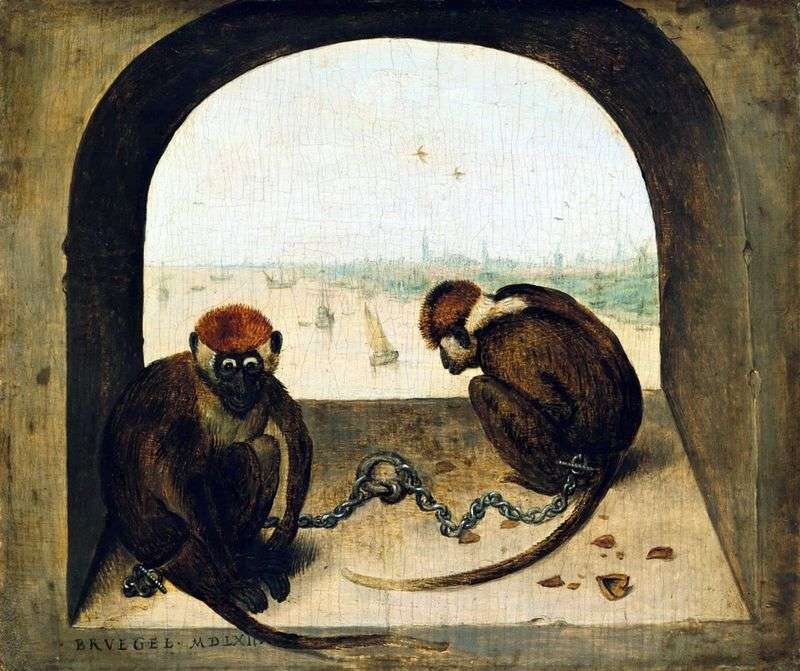
In 1562 Bruegel wrote a small picture “Two monkeys on a chain.” In the foreground are two monkeys sitting on a chain in the opening of a low vaulted window. The monkey is a symbol of sin, of low instincts: shamelessness, lust.
Here are presented other symbols of sin, which were easily discerned by Brueghel’s contemporaries. I mean a nut shell – the motif of fleshly sin known to us, the sin of lust, voluptuousness. Thus, sin is set on a chain, sin is tamed. On this occasion, one can speculate whether this sin is tamed in itself by man himself or some external forces have shackled him.
The landscape in the depth, opening with this massive stone wall, reproduces the Antwerp coast quite accurately, in the distance the churches of the city are guessed. He is very subtly written – virtuoso and unpretentious. There is something almost impressionistic in the light strokes of the Bruegelian brush. Maybe this picture is connected with Bruegel’s ideas about marriage, with his intentions to acquire a family. I mentioned that the old stories about the artist told that he had some kind of connection with the servant and he, having married, was forced to leave Antwerp at the insistence of his mother-in-law. Perhaps, in this connection, in the work of Bruegel, there arises the motive of tamed sin and the city he loved, to which he no longer was to return.
Probably, in this work some autobiographical moments from the artist’s life are ciphered. And at the same time, you can not see in these two animals only the symbols of sin. Bruegel goes further, enriching the image structure. He mentally makes us almost regret these unfortunate animals that were brought somewhere to the North of Europe from the southern, hot countries. How they are huddling, how uncomfortable they are, how cold, how much almost human sadness in the eyes of these monkeys, who stare at us. There is a sense of their lost in the world, a feeling of dreary loneliness; let them be two, but they are completely disunited.
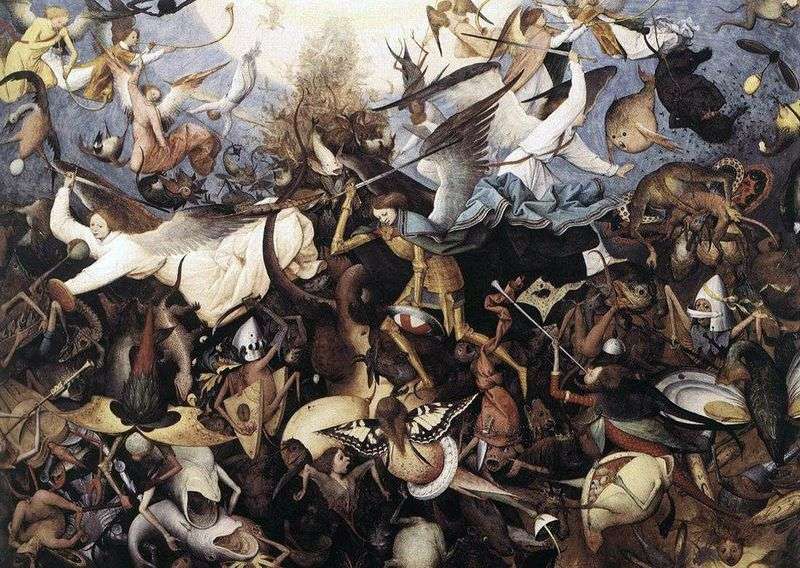 The Fall of the Rebellious Angels by Peter Brueghel
The Fall of the Rebellious Angels by Peter Brueghel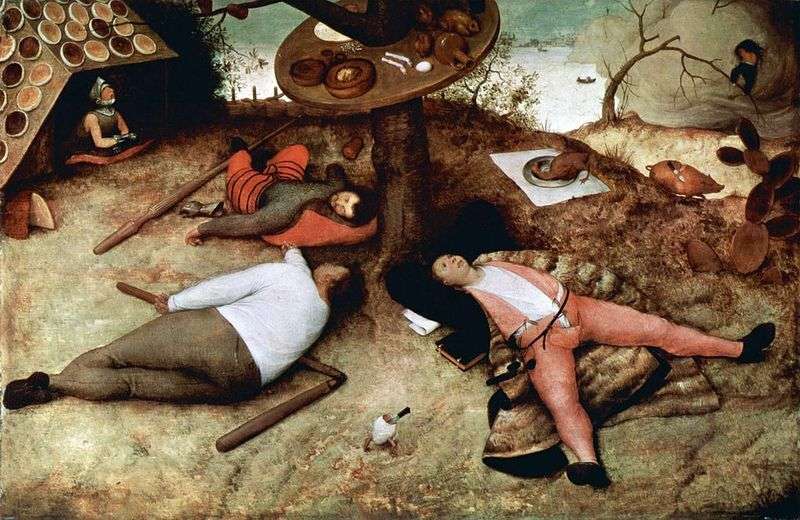 Country lazy by Peter Brueghel
Country lazy by Peter Brueghel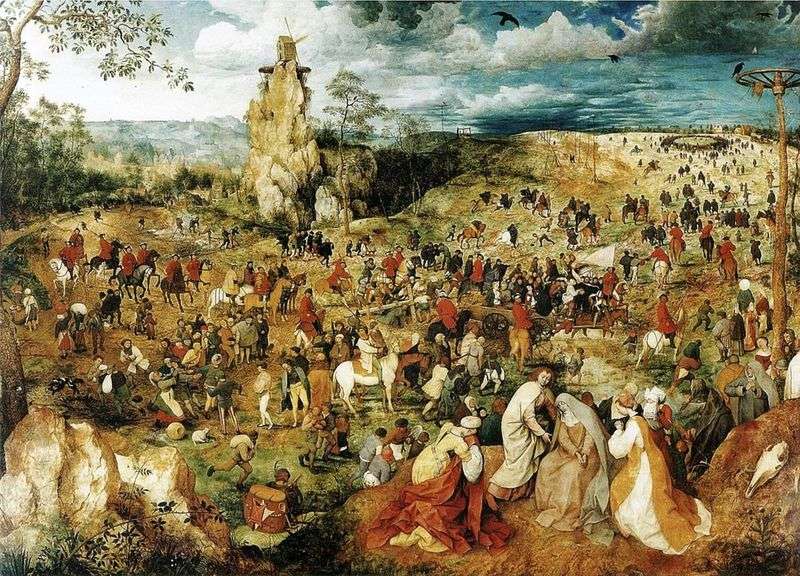 The Way to Calvary by Peter Brueghel
The Way to Calvary by Peter Brueghel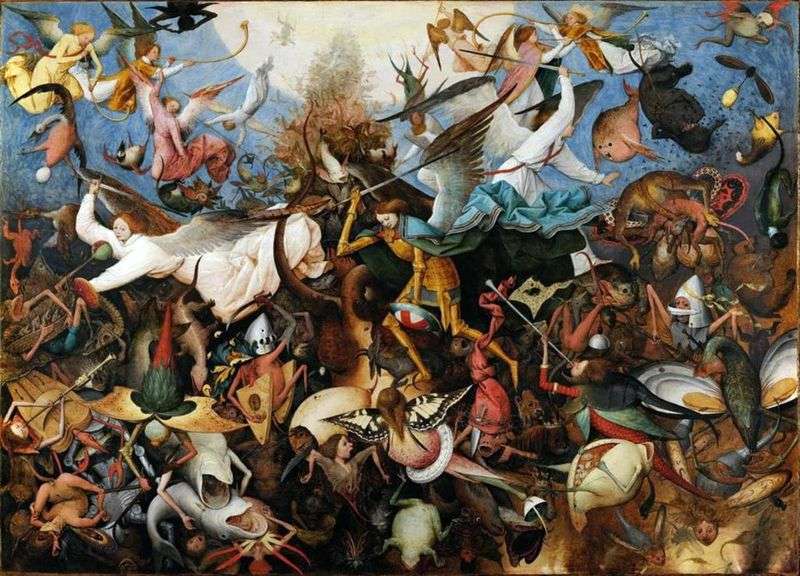 The Exile of the Fallen Angels by Peter Brueghel
The Exile of the Fallen Angels by Peter Brueghel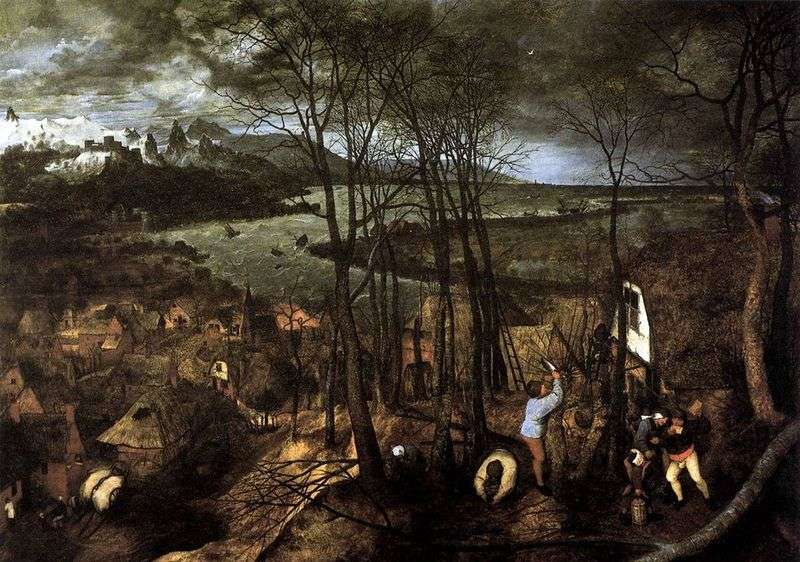 A gloomy day. Cycle of the Seasons by Peter Brueghel
A gloomy day. Cycle of the Seasons by Peter Brueghel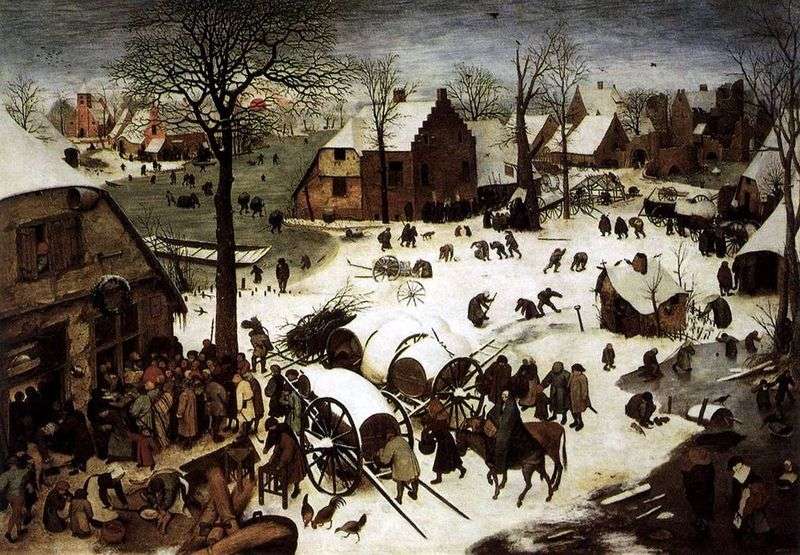 Census in Bethlehem by Peter Brueghel
Census in Bethlehem by Peter Brueghel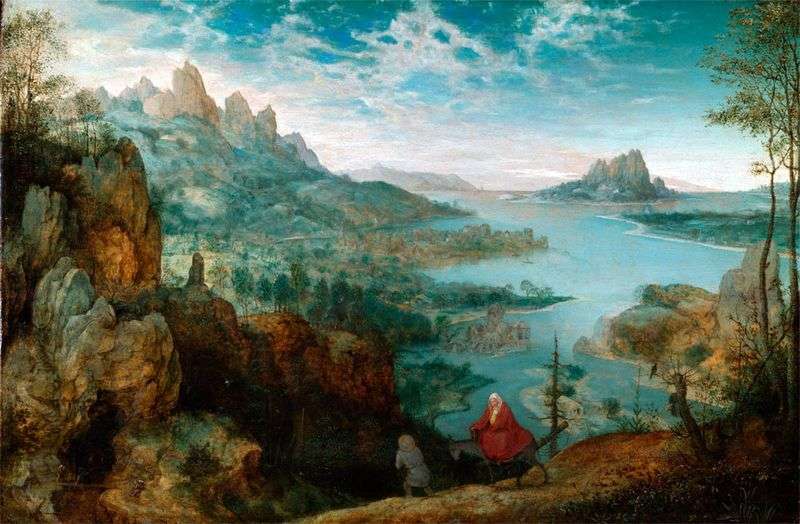 On the way to Egypt by Peter Brueghel
On the way to Egypt by Peter Brueghel The Parable of the Sower by Peter Brueghel
The Parable of the Sower by Peter Brueghel